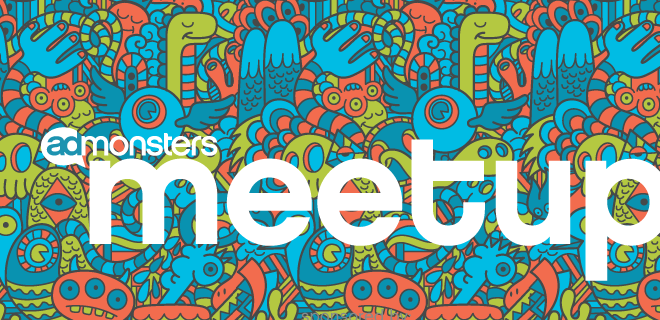
News flash—context matters! Increasingly, advertisers are realizing the impact of great user experiences on their spend. According to a recent Group M study, ads appearing in quality online environments prove 42% more cost-effective based on engagement, viewability, and dwell time.
The pressure on publishers to deliver premium inventory is only heating up, especially as limitations on third-party cookie usage increases. Nowhere does this ring truer than in the world of video, where an awesome UX is dependent upon data and a poor UX can lead directly to failure.
For a long time now, some publishers have traded their users’ needs for business goals directly tied to increased revenues. With privacy regs heating up, giving consumers more control over their data, and ad blocking users still being a major problem, a focus on UX and consumer engagement is no longer simply a nice-to-have, it’s increasingly a must-have, serving as a key competitive differentiator.
On October 17, 2019, I moderated an AdMonsters Meetup Panel—What’s UX Got to do With it? (sponsored by Cedato)—at The New York Times, featuring Dvir Doron, GM, North America, Cedato, Jay Glogovsky, Sr. Director, Revenue Analytics and Operations, The New York Times and Matt Wurst, Managing Director, North America, revelation.
We talked about how media buyers determine what constitutes a quality environment; how publishers demonstrate the value of their inventory; what exactly is a quality; how is quality quantified; what role the ad team plays in UX; what the most important tactics are that should be included in UX considerations; how optimization and contextual relevance impacts UX leading to stronger performance metrics and better monetization; and so much more.
Here are the highlights:
Dvir Doron, GM, North America, Cedato
Less content with higher impact is proving more effective for advertisers @CedatoTech #meetup
— AdMonsters (@AdMonsters) October 17, 2019
Cedato is a video advertising technology company that has been working with publishers for four years, working with buyers programmatically and has been working with agencies the past year-and-a-half. Doron sees his company’s role as a direct connection from buyer to viewer. In that regard, it’s important to consider the user journey in determining which ad to show which viewer. This is achieved with a complete video content monetization solution that features built-in tools for running high-yield video across desktop and mobile while delivering an enhanced viewing experience.
For users and publishers, this results in faster ad loading (up to 50% faster than other top providers) and faster content loading for significantly higher results, delivering up to 30% better video completion rates and significantly enhanced fill-rate performance. “Creating supply-path optimized, brand-safe, curated inventory gets advertisers the viewers they want with better results across the board,” says Doron.
Cedato offers a range of video products across screens, including short-form, long-form, influencer video, and engagement-driven forms, where users get to interact with the content before they even see it.
Buyers are not paying enough attention to the little UX metrics—creative size, load times, tag issues, etc. @CedatoTech #meetup
— AdMonsters (@AdMonsters) October 17, 2019
Jay Glogovsky, Sr. Director, Revenue Analytics and Operations, The New York Times
“The CPMs coming through prog pipes? Not the most important metric. Engagement and people coming back is what we are studying.” @nytimes #meetup
— AdMonsters (@AdMonsters) October 17, 2019
UX at The New York Times is a little different than it is for purely ad-supported content plays. The Times is a subscriber-first publisher focusing on the reader experience. “Reader experience is the far most important asset that we have,” says Glogovsky.
It’s important to have the right cadence of ads to make sure you’re not bombarding the readers in an operation like The Times. The frequency strategy is based on the ads surrounding the content experience (and not the other way around) so there’s a guarantee that you’re getting the highest quality ads next to the highest quality content.
The Times has also lowered the amount of ads on the page, which at first resulted in a drop in ad revenue, but with a focus on UX, engagement and loyal readership picked up, which ultimately gains subscribers. “We’re blocking bad quality ads off of our site. We create custom formats that feel and look like The Times. We want quality revenue and not just the low-hanging fruit,” says Glogovsky.
User experience? @nytimes is about reader experience, hence why the company has explored a strategy with (gasp) fewer ads. @CedatoTech #meetup
— AdMonsters (@AdMonsters) October 17, 2019
Matt Wurst, Managing Director, North America, revelation
Brands are creating content to push conversions—gives a whole new spin to UX. “The consume is leading us as brands, publishers, and technologist.” @WeAreRevelation @CedatoTech #meetup
— AdMonsters (@AdMonsters) October 17, 2019
As the lead for content strategy at a mostly digital creative agency, Matt Wurst has an insider’s view on how brands are thinking about and executing in the digital space on both platforms and their owned and operated sites. His company revelation is also part of a global publishing network.
For Wurst, UX is about getting people to transact by providing an optimal consumer journey. Over the past few years, he’s watched brands move from putting all of their resources into social and paid media publishing to taking more control over their content and data. “UX means pulling people back into owned and operated,” he says.
Content drives UX—it’s the blood running through the veins of digital media @WeAreRevelation @CedatoTech #meetup
— AdMonsters (@AdMonsters) October 17, 2019
As a final question, I asked the panelists how they see UX evolving over the next five years as cookie use become more limited and users gain more control over their privacy, and the consensus seemed to be that UX needs to be thought of on a platform-by-platform basis in terms of what the most engaging content and creative is on that particular medium and how well you understand your audience in that environment. One of the most important points that arose from the discussion is the stronger role that first-party data and context will play in optimization.


